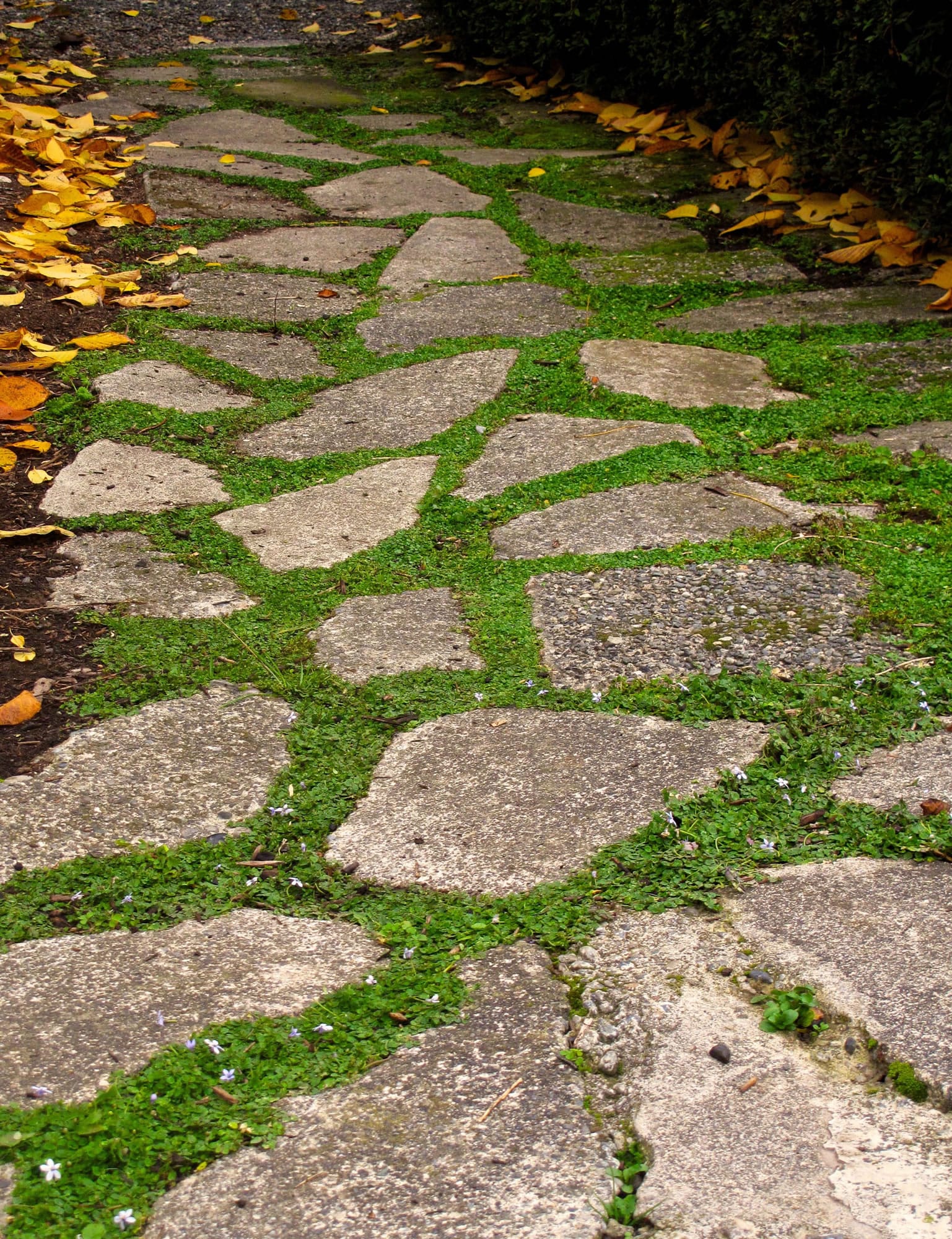Plants you can walk on are attractive additions to pathways. These low-lying perennials can withstand heavy foot traffic, release pleasant odors when crushed, smother weeds, and cushion your step in the narrow spaces between bricks or flagstones.
“You can use ‘steppables’ for all kinds of applications,” said Kathy Gurnee, owner of Green Thumb Landscaping in Clinton, a town on Whidbey Island.
“You can use them as groundcover in lieu of bark,” she said. “On patios, pathways, rock walls and crevices. I like them around the bottoms of trees. They’re also good for living roofs and living walls. They deliver a beautiful resilience.”
Walkables generally are defined as creeping plants that don’t exceed 12 inches in height, said John Schroeder, president of Valleybrook International Ventures Inc., a family-owned horticultural operation in Abbotsford, B.C. The company’s line of “Jeepers Creepers” includes around 100 varieties of low-to-the-ground herbs, mints, evergreens, ivy, moss and more.
“I like them for lawn repair or replacement,” he said, adding that he stripped 900 square feet of turf grass from his own front yard and replaced it with creeping mazus, a dense, ground-hugging plant.
“It’s just a gorgeous lawn application,” Schroeder said. “I set out some 1-inch plugs at 12-inch spacings in September, and by July, they were one solid mass.
“They give me an inch-thick, lawnlike cover with purple flowers for a few weeks out of the year and no more mowing. Just some trimming and weeding around the edges.”
Many walkable plants are drought-resistant, while others perform well in shade, on hard-to-maintain slopes, covering bulb gardens, spilling from containers or protecting high-use areas.
A sampling:
o For areas with moderate to heavy foot traffic: Corsican sandwort has mosslike foliage with white flowers in spring. Does well in damp, dry or shaded settings. Celestial spice pratia has tiny green leaves covered by deep blue flowers all summer.
o For fragrance: Corsican mint, the smallest of the mint family. It delivers a pleasant crème-de-menthe fragrance when crushed. It also does well in shade. Creeping thyme is a fast-growing groundcover that gives off a spicy scent. Most thyme varieties are drought-tolerant and can survive moderate traffic. Their flowers are attractive to butterflies.
o As a lawn substitute: Alpine moss ear grows into a dense carpet with white flowers in summer. It thrives in dry climates. Blue star creeper is a dark green perennial producing soft blue flowers through summer. Turkey tangle fogfruit has gray leaves with white to lavender blooms from spring to fall, and is deer-resistant. Creeping mazus, with its low mat of green leaves studded by small lavender flowers, tolerates hot, humid summers.
Getting walkables established is half the fun. The other half can be had with pruning.
“Corsican mint, if you let it go, will grow out and cover the flagstones as well as the weeds,” Gurnee said. “I like to be a little creative. I use a pair of scissors and trim it back in some sort of design so the stones aren’t covered. That way you can see the tones and textures of the stones up against the plant colors.”



